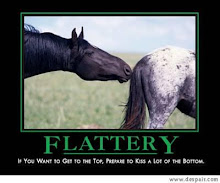Maybe it's because I am so unused to being helped that I am unwilling to believe that people do something for nothing these days. I help people out for nothing, but since it is rarely done for me - especially when it's to do with work - I always wonder:
"What are you going to ask for in return?"
This week has been a huge jump for me, not one but two people have done nice things without even telling me about it! One lady has given me some rugs that she no longer needs, and they are almost new gorgeously expensive rugs to boot. The other has weeded a paddock, he's a border, he's not supposed to do that, it's my job! It's hard to imagine what's going on in my brain right now. I live in a world where I don't get offered help if my foot is broken ( that's happened twice) or I am hallucinating because I have a fever, I'm still at work, still struggling on. So to get help that is actually useful help, and totally unasked for..... it's like a dream come true!
So to all of those boarders out there who help out their stable staff without being asked, or those who just pitch in to lend a hand when someone is struggling, I say a BIG THANKYOU!!!!!
And if we don't seem immediately greatful, just remember, we're not used to being helped.... we may not understand it.
When people ask for shit
10 years ago
